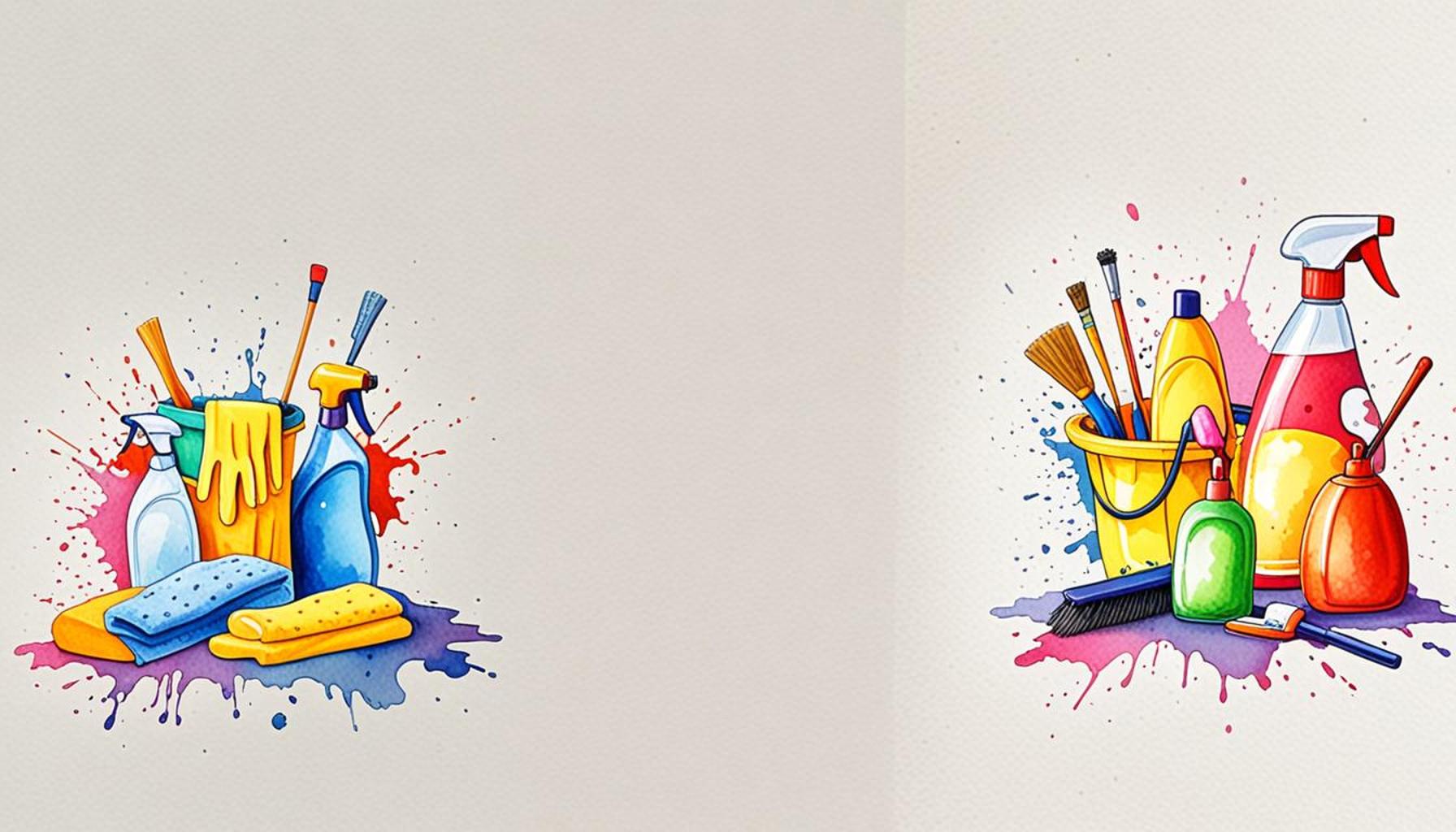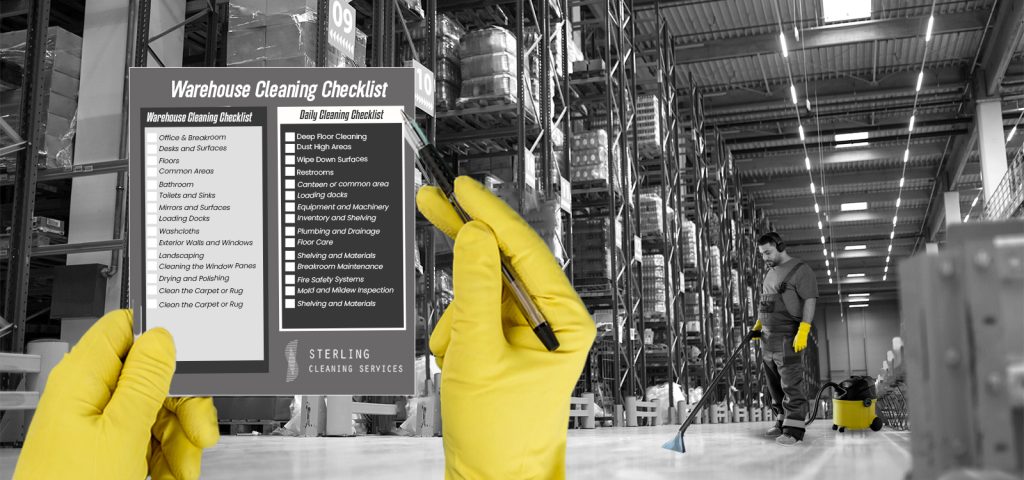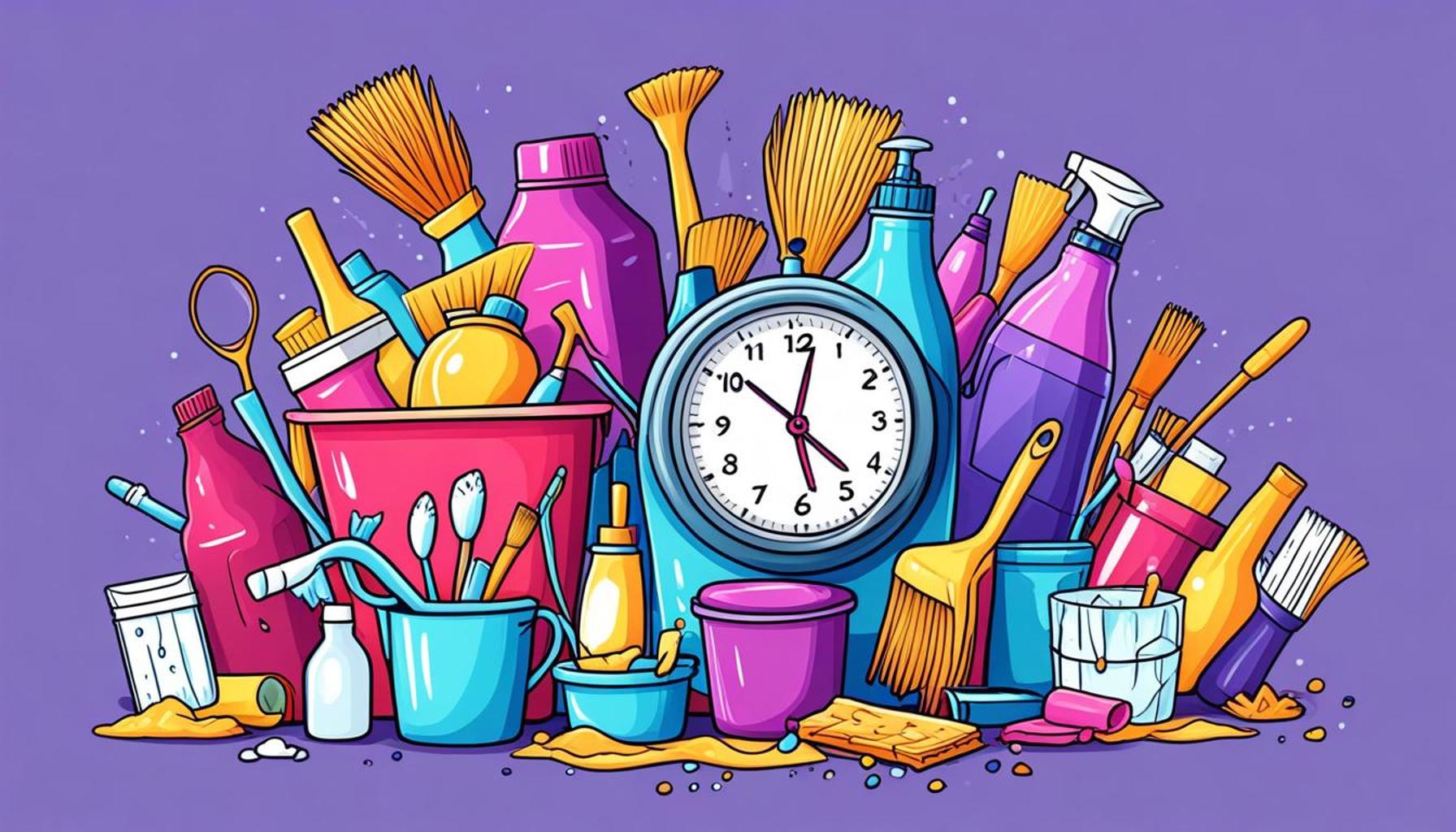The importance of preventive cleaning: how to avoid buildup and reduce cleaning time

The Significance of Embracing Preventive Cleaning
Maintaining a clean environment has become essential in an increasingly busy world. As we navigate through our daily routines, dirt, dust, and clutter accumulate, often leading to overwhelming cleaning tasks. Embracing preventive cleaning can dramatically transform how we manage our spaces, saving time, reducing stress, and even promoting better health. By integrating simple yet effective cleaning practices into our daily lives, we can keep our homes and workplaces looking pristine and feeling comfortable.
Key Advantages of Preventive Cleaning
Understanding the benefits of a proactive approach to cleanliness can be a game changer. Here are some key advantages:
- Reduces cleaning time: Regular cleaning and upkeep can significantly minimize the time spent on deep cleaning sessions. For instance, a quick daily vacuum can prevent the need for an extensive clean that might require hours of effort.
- Avoids costly deep cleaning: Addressing small messes promptly means avoiding the build-up that leads to expensive deep cleaning services. For instance, regularly wiping kitchen counters can prevent stains that are tough to remove and require professional cleaning to address.
- Enhances indoor air quality: By systematically eliminating dust and allergens, preventive cleaning ensures healthier indoor air. This is crucial for respiratory health, particularly for children and the elderly, who may be more vulnerable to pollutants.
Extending the Life of Your Belongings
Beyond cleanliness and aesthetics, preventive cleaning is pivotal in extending the lifespan of your belongings. Regular maintenance—such as dusting, vacuuming carpets, and cleaning appliances—ensures that surfaces stay in superior condition, ultimately saving you money on replacements. For example, neglecting to clean an air conditioning unit can lead to costly repairs or premature replacements due to the accumulation of dust and grime.
Creating a Sustainable Cleaning Routine
Transitioning to preventive cleaning doesn’t have to be daunting. Start by setting a manageable schedule that includes small daily tasks, such as tidying up your living space each evening or dedicating 15 minutes a day to a specific area. Tools like checklists can also help maintain consistency and ensure you don’t overlook any vital tasks.
As you cultivate this cleaning habit, you’ll find that maintaining a cleaner environment leads to a more organized and stress-free life. By engaging in preventive cleaning, you contribute not only to the health of your immediate environment but also to your overall well-being.

Join the movement towards a cleaner, healthier living or working space. Exploring the concept of preventive cleaning can reveal practical strategies that elevate your environmental standards and foster a serene and efficient lifestyle.
DISCOVER MORE: Click here for tips on seasonal cleaning
Understanding Preventive Cleaning Techniques
Preventive cleaning is not merely a trend; it is a philosophy that can alter the way we engage with our living and working environments. At its core, it involves adopting a consistent cleaning regimen that seeks to tackle dirt and clutter before they morph into overwhelming tasks. The implementation of these techniques can vary, but the underlying principle remains the same: a little effort on a regular basis can lead to significant results over time.
One of the most impactful ways to practice preventive cleaning is through the 30-Second Rule. This simple rule encourages individuals to spend just half a minute tidying up small messes as they occur. Whether it’s wiping a countertop after cooking or picking up items that are out of place, these brief moments can substantially cut down on the need for extensive cleaning later. Over days and weeks, this small investment of time can lead to a cleaner environment with minimal effort.
In addition to the 30-Second Rule, developing an understanding of seasonal cleaning is crucial. While preventive cleaning is about everyday maintenance, seasonal cleaning allows you to address areas that may not get regular attention. Spring cleaning, for instance, can be an opportunity to deep clean those hard-to-reach places—the tops of cabinets, behind large furniture, and within appliances. Incorporating these periodic check-ups into your routine can prevent the buildup of dirt and grime, rendering your regular cleaning sessions less daunting.
Creating a Cleaning Checklist
Implementing a structured approach to preventive cleaning can enhance its effectiveness. A well-organized cleaning checklist serves as a valuable tool to manage and track your cleaning tasks. Here are some essential components to consider when creating your checklist:
- Daily Tasks: Simple actions such as making the bed, wiping kitchen counters, and doing a quick sweep or vacuum.
- Weekly Tasks: More engaging duties like mopping floors, dusting surfaces, and washing bathroom fixtures.
- Monthly and Seasonal Tasks: Jobs requiring more time, including cleaning windows, deep-cleaning carpets, and inspecting appliances for dust accumulation.
By following a checklist, you can ensure that areas of your home or office do not fall into neglect. This structured approach instills discipline and drives accountability, making it easier to allocate specific times for cleaning activities while minimizing the emotional burden associated with falling behind.
Investing in Preventive Cleaning Tools
Finally, investing in quality cleaning tools can play a significant role in revolutionizing preventive cleaning efforts. Selecting the right vacuum cleaner, dusters, and multipurpose cleaners designed for various surfaces can streamline the cleaning process. The right equipment not only enhances efficiency but also ensures effective cleaning results. Research has shown that tools which are designed specifically for preventive cleaning contribute to a more consistent and thorough upkeep of your space.
In summary, preventive cleaning is an essential strategy for maintaining cleanliness without the associated stress of extensive cleaning sessions. By adopting small daily habits, using checklists, and investing in the right tools, you can foster a cleaner living or working environment that champions both health and well-being.
The Key Benefits of Preventive Cleaning
Preventive cleaning is not just about keeping spaces tidy; it plays a critical role in extending the lifespan of your belongings. By addressing dirt and grime early, you can prevent the accumulation of harmful bacteria and allergens, creating a healthier environment. In commercial settings, proactive cleaning practices can also minimize equipment wear and tear, leading to reduced maintenance costs over time. Moreover, implementing preventive cleaning techniques enhances workplace efficiency. A clean workspace boosts employee morale and productivity, showcasing the direct link between a tidy environment and overall job satisfaction. Regularly scheduled cleaning sessions can help reduce deep cleaning time significantly, allowing staff to focus on their core responsibilities instead of extensive cleaning tasks.
Understanding the Role of Preventive Cleaning Tools
To maximize the effectiveness of preventive cleaning, it’s essential to incorporate the right tools. High-quality vacuums, mops, and eco-friendly cleaning supplies can make a noticeable difference. Additionally, adopting cleaning software or checklists ensures that no areas are overlooked, creating a standardized approach to cleanliness. Utilizing preventive cleaning maintenance schedules can streamline operations and make the process more manageable. This schedule helps in anticipating cleaning needs rather than reacting to dirt and mess, thus saving valuable time and resources. In summary, preventive cleaning not only enhances aesthetic appeal but also promotes a healthier and more efficient environment. It’s an investment in health, performance, and long-term savings.
DISCOVER MORE: Click here for expert tips
Leveraging Technology for Preventive Cleaning
In the age of technology, integrating smart cleaning devices into your routine can enhance your preventive cleaning efforts significantly. Robotic vacuum cleaners, for instance, have revolutionized the way we approach everyday maintenance. These devices can be programmed to run on a schedule, allowing them to tackle dust and debris even when homeowners are busy with work or family activities. In fact, studies indicate that regular use of a robotic vacuum can reduce the amount of accumulated dirt by as much as 50%, making it easier to maintain clean floors with less manual intervention.
Moreover, consider the rise of cleaning apps that help track and manage tasks. These digital platforms often include customizable checklists, reminders, and even tutorials for specific cleaning techniques. By leveraging such technology, you can ensure that no corner of your home or workspace is overlooked, providing a systematic approach to cleaning that is both efficient and effective.
The Importance of Educating Household Members
Another critical aspect of preventive cleaning is fostering a culture of cleanliness among all household members. When everyone contributes to maintaining a clean space, it becomes much easier to prevent buildup. Educating family members or office colleagues about the principles of preventive cleaning creates a shared responsibility, discouraging the “out of sight, out of mind” mentality that often leads to clutter.
Organizing regular family meetings or team huddles to discuss cleaning duties can promote cooperation and inspire a more proactive attitude toward maintaining cleanliness. For instance, involving children in cleaning tasks not only teaches them important life skills but also reinforces the idea that everyone plays a role in sustaining a healthy environment. Furthermore, a fun approach to these discussions—like turning chores into a friendly competition—can motivate everyone to participate enthusiastically.
Emphasizing the Health Benefits
Preventive cleaning goes beyond aesthetics; it has profound implications for health and well-being. Regular cleaning reduces allergens such as dust mites, mold, and pet dander, which can contribute to respiratory problems and allergies. The American Lung Association emphasizes that maintaining a clean environment can drastically impact indoor air quality. Research shows that homes with effective cleaning regimens have significantly lower rates of asthma and allergic reactions among their inhabitants.
Additionally, a clean workspace can enhance productivity. According to a study published in the Journal of Environmental Psychology, individuals working in tidy environments are more likely to focus and be effective in their tasks. By avoiding clutter, you can reduce distractions and create a more inviting atmosphere that is conducive to both mental clarity and physical health.
Creating Zones for Efficient Cleaning
Another effective preventive cleaning strategy is organizing your space into cleaning zones. By categorizing areas based on their function—such as kitchen, living room, and bathrooms—you can streamline your cleaning process. This zoning method allows you to tackle one section at a time, making the cleaning tasks feel less overwhelming. It also promotes a systematic approach, ensuring that no area is neglected and that cleaning becomes a manageable part of your routine. As a bonus, when guests arrive, you can quickly spruce up by focusing on high-traffic areas, preserving an overall sense of order in your home.
Incorporating these principles into your preventive cleaning regimen can drastically reduce the time and effort needed for cleaning, allowing you to enjoy a consistently clean environment without the stress of extensive cleaning marathons.
DISCOVER MORE: Click here for expert tips
Conclusion
In summary, preventive cleaning is not merely a chore; it is a crucial strategy that empowers homeowners and workplaces to maintain a clean, healthy, and organized environment. By implementing effective techniques such as leveraging advanced cleaning technology and fostering a culture of responsibility among family members or colleagues, individuals can significantly minimize dirt and clutter buildup. This proactive approach translates to saving valuable time and energy, leading to a more enjoyable living and working atmosphere.
The health benefits of preventive cleaning cannot be overstated either. A clean environment reduces allergens and ensures better air quality, which is essential for promoting long-term health. As research indicates, those dwelling in well-maintained spaces are less prone to respiratory issues and allergies, emphasizing the profound impact of routine cleaning practices on overall well-being.
Additionally, organizing spaces into cleaning zones not only makes the task at hand manageable but also enhances productivity in work settings. By establishing a clear routine that integrates these cleaning strategies, you can effectively reduce the burdens of extensive cleaning efforts and prevent significant buildup over time.
As you consider incorporating these preventive cleaning methods into your daily life, remember that the benefits extend far beyond aesthetic appeal. By prioritizing cleanliness, you are investing in a healthier lifestyle, a more productive work environment, and ultimately, a greater sense of peace and satisfaction in your daily activities. Embrace the importance of preventive cleaning and witness the transformation in both your space and your quality of life.


